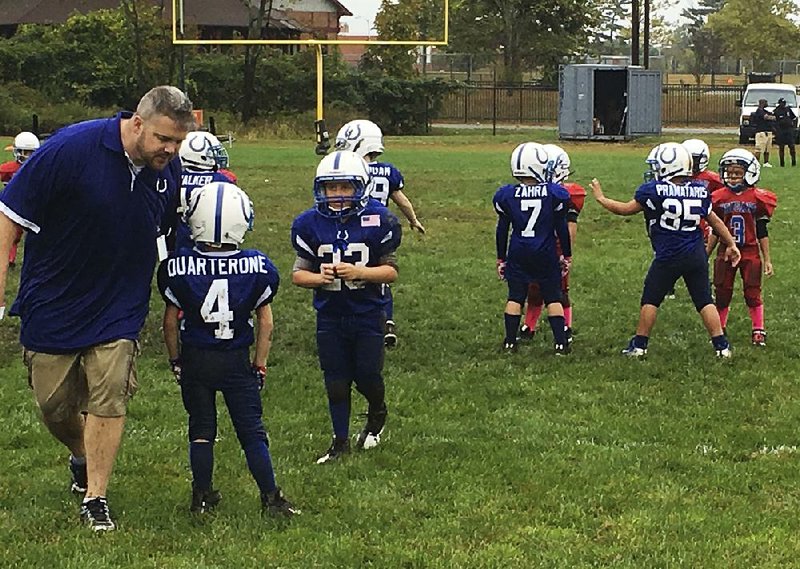USA Football is rolling out a youth initiative that stresses soundness over safety.
If that sounds a bit odd in his age of concussion awareness and injury prevention, don't be alarmed.
Rookie Tackle emphasizes skill and technique development, with the hope that if youth get taught properly, participation, popularity and safety will follow.
For USA Football, Rookie Tackle fits in the middle of the model that starts with flag football and progresses to 11-on-11 the way baseball starts with T-ball, moves to coaches pitching to players and then to players pitching.
"Football is a sport that is one of the last sports not to have a true pathway model," said former NFL quarterback Chad Pennington, who is a member of USA Football's advisory board and is in involved in Rookie Tackle.
Pennington, who had an 11-year career with the Jets and Dolphins, has three sons, ages 13, 11 and 8.
"If they want to play tackle football, my personal conviction is they don't start tackle football until the age of 10 or 11," Pennington said. "I really believe in the flag football game."
Rookie Tackle shrinks the game, following a path most sports have already embraced.
Little League baseball uses pitching mounds that are 46 feet from home plate until players reach 13, and then they switch to the 60-feet, 6-inches used in professional leagues.
Scaled-down dimensions are prevalent in youth hockey, tennis, golf, and soccer.
USA Football suggests Rookie Tackle fields be 40 yards to the end zone and 35 yards wide, with as few as six and as many as eight players to a side. Offense is played in only one direction, sort of like half-court basketball. All possessions start from the farthest yard-line away from the end zone. Less space and players leads to more activity on the field.
"In an 11-on-11 game you look at maybe the fastest kid runs the ball and maybe two chase and everyone else just stands and watches," Pennington said.
Sideline chatter
Not sure if golf has ever been compared to basketball and soccer, but Dwight Perry of The Seattle Times sees some similarities with the European Tour's plan to implement a 40-second shot clock (basketball) and hand out a yellow card (soccer) for the first violation and a one-stroke penalty for each subsequent violation.
"What, no red card," Perry writes. "Which begs the question: Do Euro golfers get added time if they flop with a fake injury."
Fake headline
From the satirical sports web site SportsPickle.com: "Mike Pence leaves NFL game after realizing the Colts and 49ers are playing."
Subpar for course
Dwight Perry of The Seattle Times writes that North Carolina avoided major NCAA sanctions because the school's sham "paper courses" in African and Afro-American Studies were available to all students, not just jocks trying to stay eligible.
"Tar Heels officials were ecstatic," Perry jabbed, "but declined further comment until a tutor types up a press release for them."
QUIZ
College basketball and the NBA have shot clocks of differing lengths. Name the lengths of time allowed for players to shoot the ball.
ANSWER
In college basketball, there is a 30-second clock; there is a 24-second clock in the NBA and WNBA.
Sports on 10/16/2017
